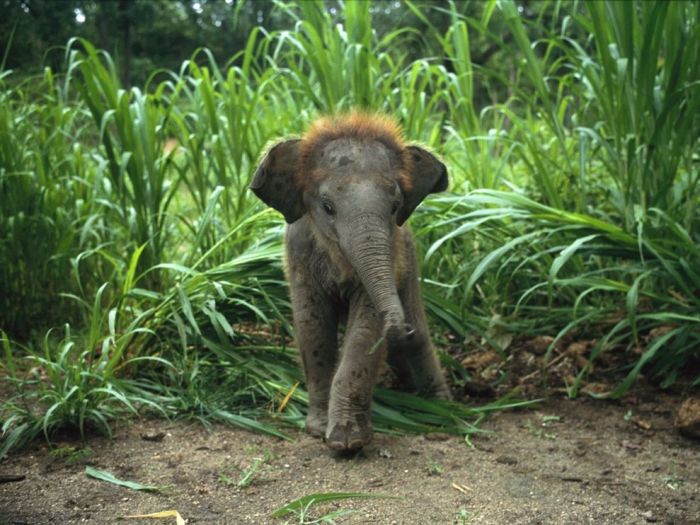|
|
Elephant
|
Although they start this "run" at only 8 km/h, elephants have been reported to reach speeds up to 40 km/h (25 mph), all the while using the same gait. In tests at the Thai Elephant Conservation Centre, the fastest elephants reached a top speed of 18 km/h (11 mph). At this speed, most other four-legged creatures are well into a gallop, even accounting for leg length. Spring-like kinetics could explain the difference between the motion of elephants and other animals.
Ears
The large flapping ears of an elephant are also very important for temperature regulation. Elephant ears are made of a very thin layer of skin stretched over cartilage and a rich network of blood vessels. On hot days, elephants will flap their ears constantly, creating a slight breeze. This breeze cools the surface blood vessels, and then the cooler blood gets circulated to the rest of the animal's body. The hot blood entering the ears can be cooled as much as ten degrees Fahrenheit before returning to the body. Differences in the ear sizes of African and Asian elephants can be explained, in part, by their geographical distribution. Africans originated and stayed near the equator, where it is warmer. Therefore, they have bigger ears. Asians live farther north, in slightly cooler climates, and thus have smaller ears.
|
|









